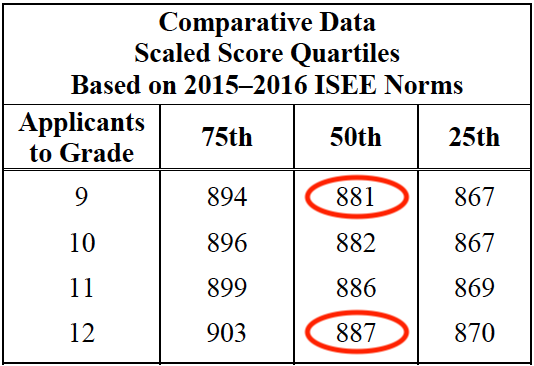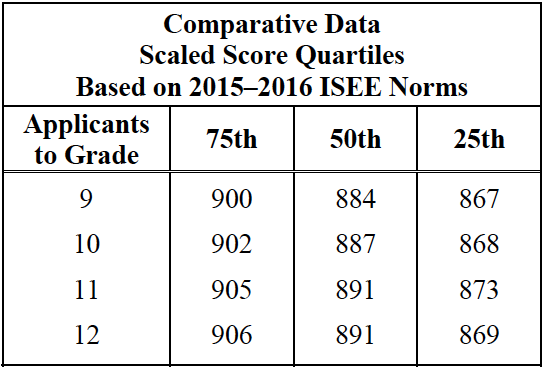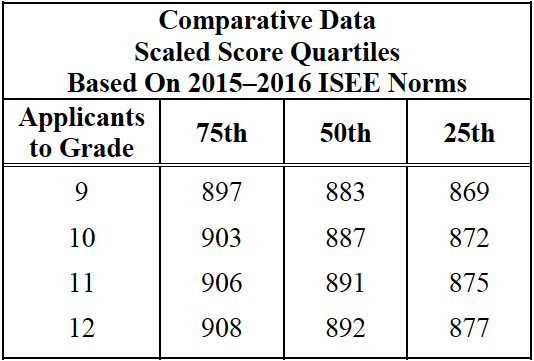While there are different variations of each ISEE test, it is very possible that a student applying to 9th grade could be taking the exact same test with the exact same questions as a student applying to 12th grade; however, we explain below how this possibility has negligible impact on the test’s overall difficulty.
The ISEE or Independent School Entrance Exam is offered in multiple levels including the Upper, Middle, Lower, and Primary. However, only the “Primary Levels” are grade specific down to the exact grade to which your child is applying. For students taking the upper, middle, or lower level ISEE, they will be taking a test that is designed to measure student preparedness for multiple grade levels:
- ISEE Upper Level = Applying to grades 9, 10, 11, and 12
- ISEE Middle Level = Applying to grades 7 and 8
- ISEE Lower Level = Applying to grades 5 and 6
However, unlike the CTP-4 taken in many private schools, and commonly referred to as the “ERBs” after the test’s maker Educational Records Bureau, the ISEE is not strictly a grade-level achievement test.
Like the SAT and the ACT, it is also a reasoning test meant to challenge students to think beyond what they’ve learned in the classroom. To this extent, the ERB does not expect students in different grades to score very differently.
To better understand scores across grade level, let’s look at the “Scaled Score Quartiles” provided by ERB for the ISEE Upper Level for the 2015-2016 norm groups.
Verbal Reasoning Comparative Scores

Looking at the column for the 50th percentile of students (or average students), you should notice that the difference in scaled scores for students applying to 12th grade versus students applying to 9th grade is just 6 points (887 – 881). For this norm group, those 6 scaled points represent getting just 2 more questions (out of 40) correct or a 5% improvement over three years.
Quantitative Reasoning Comparative Scores

Looking at the column for the 50th percentile of students, you should notice that the difference in scaled scores for students applying to 12th grade versus students applying to 9th grade is just 8 points (888 – 880). For this norm group, those 8 scaled points represent getting just 2 more questions (out of 37) correct or a just over 5% improvement across three years.
Reading Comprehension Comparative Scores

Looking at the column for the 50th percentile of students, you should notice that the difference in scaled scores for students applying to 12th grade versus students applying to 9th grade is just 7 points (891- 884). For this norm group, those 7 scaled points represent getting just 2 more questions (out of 36) correct or a just over 5% improvement across three years.
The picture even gets a little more interesting when you look at the column for the 25th percentile (or below average students). Notice that the score peaks for students applying to 11th grade at 873 and actually declines to 869 for students applying to 12th grade.
Mathematics Achievement Comparative Scores

Looking at the column for the 50th percentile of students, you should notice that the difference in scaled scores for students applying to 12th grade versus students applying to 9th grade is just 9 points (892- 883). For this norm group, those 9 scaled points represent getting just 3 more questions (out of 47) correct or a just over 6% improvement across three years.
Conclusion
The structure of the ISEE combined with peer norming means that students should not feel like the ISEE is stacked against them, even if they are in the younger range.
*The comparative data quartiles are excerpts from the ERB’s “What to expect on the ISEE” available online at no charge at ERBLearn.org. ISEE® is a registered trademark of the Educational Records Bureau. Piqosity is neither affiliated with nor endorsed by the Educational Records Bureau.


